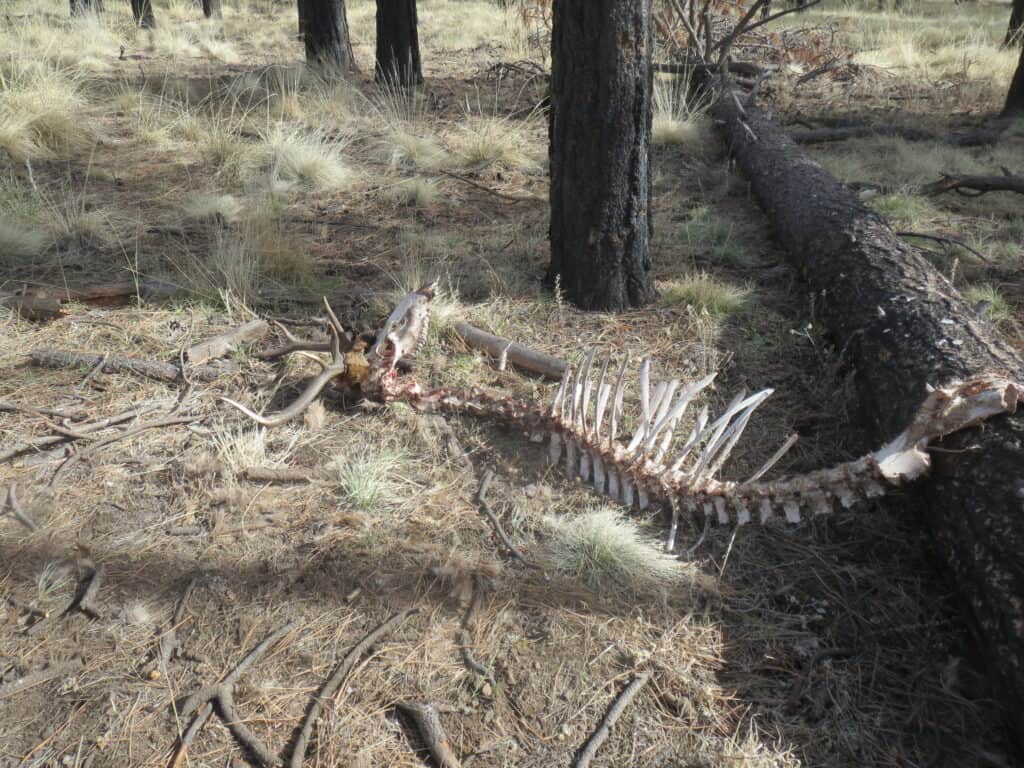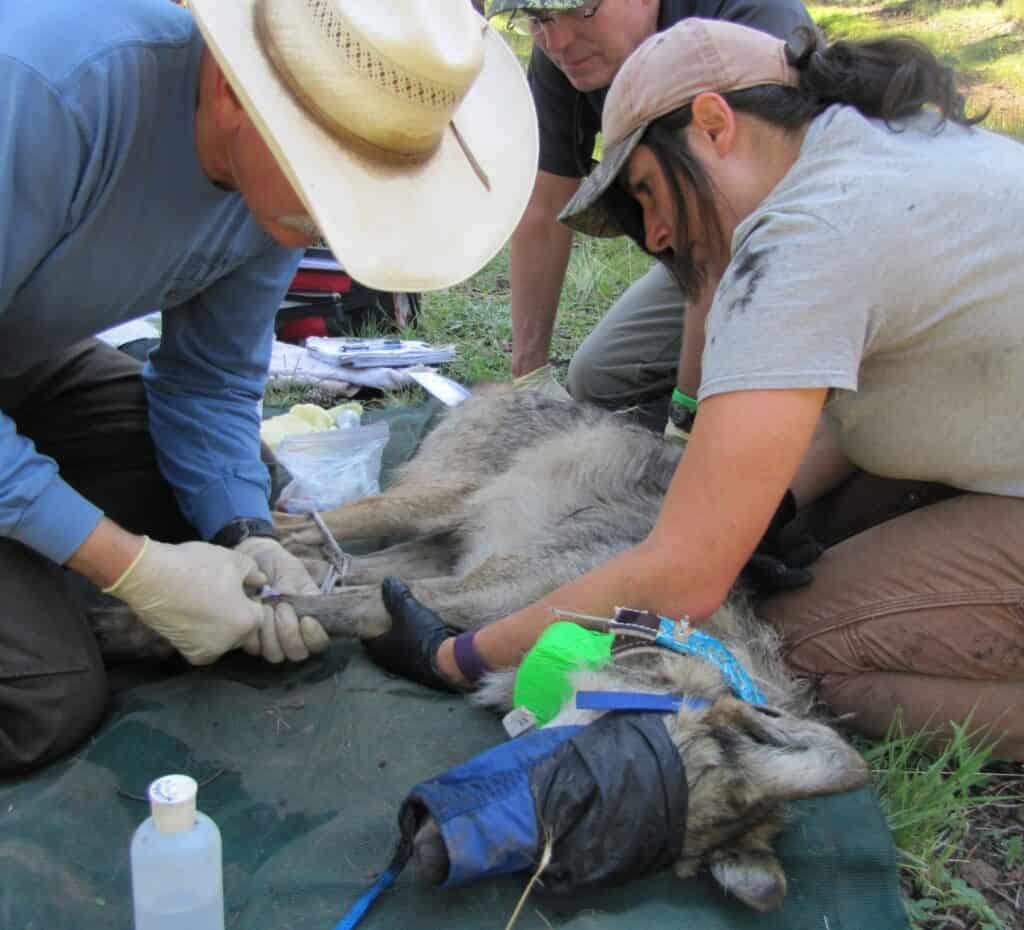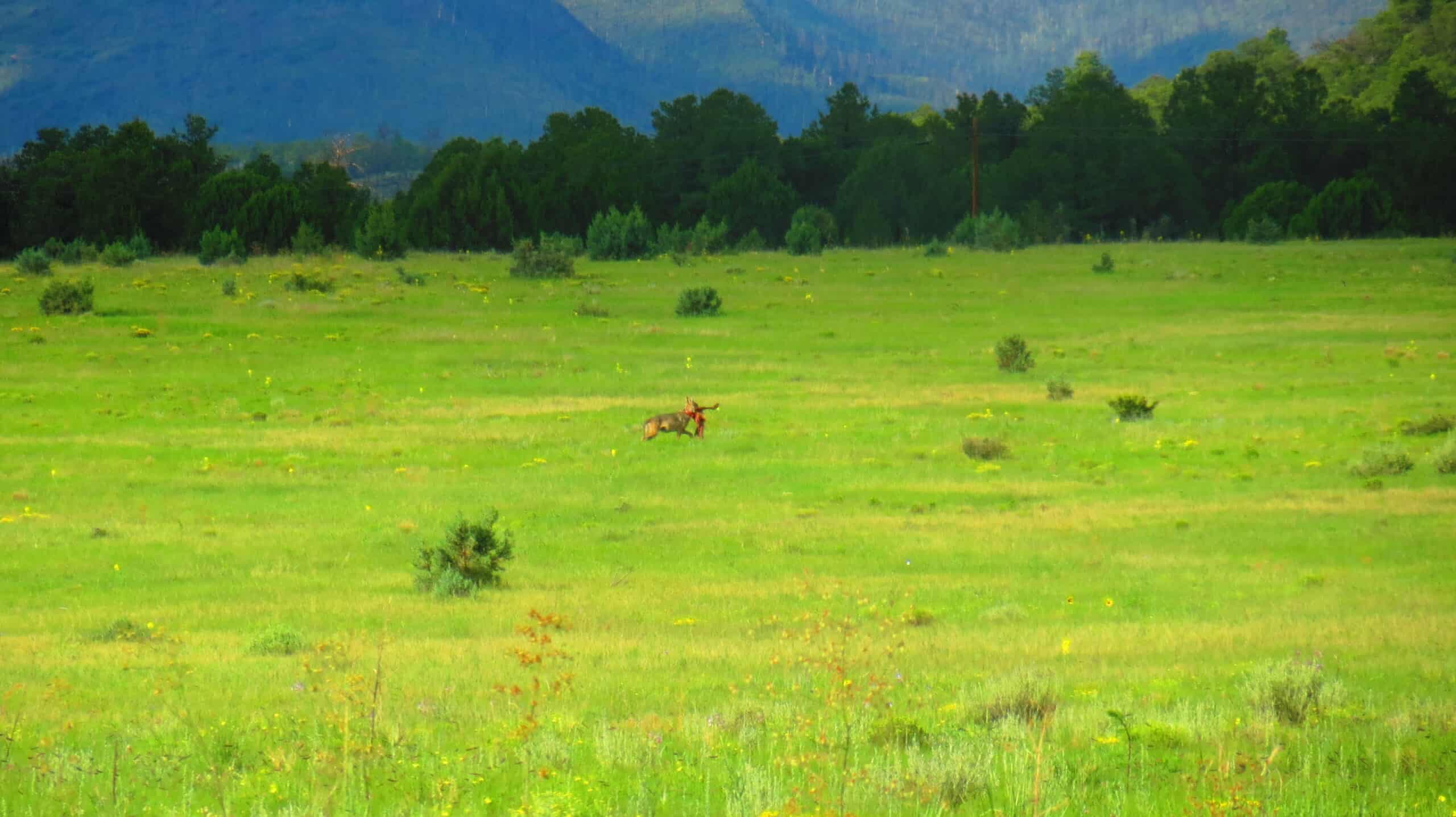Share this article
Wildlife Featured in this article
- Mexican wolf
- gray wolf
- elk
- mule deer
- pronghorn
- bighorn sheep
Mexican wolves go after same prey as gray wolves
A GPS tracking study confirmed that elk are the primary prey of wolves in Arizona
Despite their smaller size, Mexican wolves prey on the same species as their larger gray wolf cousins to the north—and in nearly the same quantity.
Many researchers have looked into gray wolf diet in northern states and in Canada. But nobody had ever published research on the diet of Mexican wolves, despite a number of informal work and field observations.
Currently the Endangered Species Recovery Section Manager with the Washington Department of Fish and Wildlife Julia Smith, and her colleagues used GPS collars and field observation to determine whether the diet of Mexican wolves (Canis lupus baileyi) was different from that of gray wolves (Canis lupus).

From 2015 to 2017, the researchers followed 10 wolf groups in Arizona during a winter study period from February to March, and a summer study period from June to July. Sometimes, the team collared one wolf in the pack. Other times, they collared more. Whenever the team saw clusters of GPS locations of wolves, they would go out into the field to determine whether a kill had happened, what prey species was killed, and how many members of the pack were involved.
They found that overall, Mexican wolves tended to kill about the same number of prey as other gray wolves.
“Mexican wolf kill rates are pretty similar to wolf kill rates in more northerly ecosystems, which is probably not too surprising because wolves are wolves,” said Smith, who was the Mexican Wolf Project Field Supervisor with the Arizona Game and Fish Department at the time of the research.
Wolves mostly focused on elk (Cervus canadensis)—often taking them down in packs. In a few cases, single wolves took down adult female elk, though these were either older or had splayed hoofs. “It’s cool to see in person how wolves hone into the particular weaknesses of these animals and exploit them,” Smith said.
On the one hand, Smith isn’t surprised that these relatively smaller wolves still manage to take down elk—“they are a highly adaptable critter,” she said of the wolves.

But, on the other hand, Mexican wolves are only about 50 to 80 pounds on average compared to the 90-100-pound average of gray wolves in the north.
The data showed that like wolves elsewhere, Mexican wolves typically take down more calves, especially in the summer when the ungulates are still small. In this season, wolves killed more animals in general than they did in the winter.
The researchers also found that wolves killed mule deer (Odocoileus hemionus) sometimes—though not as much as previous researchers had assumed. Smith did caution that their results may have missed some mule deer as these smaller prey species could be eaten more quickly, before researchers could detect a kill based on the GPS clusters. It’s also likely that the wolves kill even smaller prey species that were undetected using this technique, like rabbits and wild turkey (Meleagris gallopavo). “But they are in no way dependent on those smaller prey items,” Smith said.

They didn’t find any evidence of Mexican wolves preying on bighorn sheep (Ovis canadensis) or pronghorn (Antilocapra americana) in the area.
Smith said this study gives researchers and wildlife managers a baseline idea of what to expect from Mexican wolves, as they continue to spread through Arizona and New Mexico.
Header Image: A Mexican wolf carries an elk carcass across a field. Credit: Julia Smith








